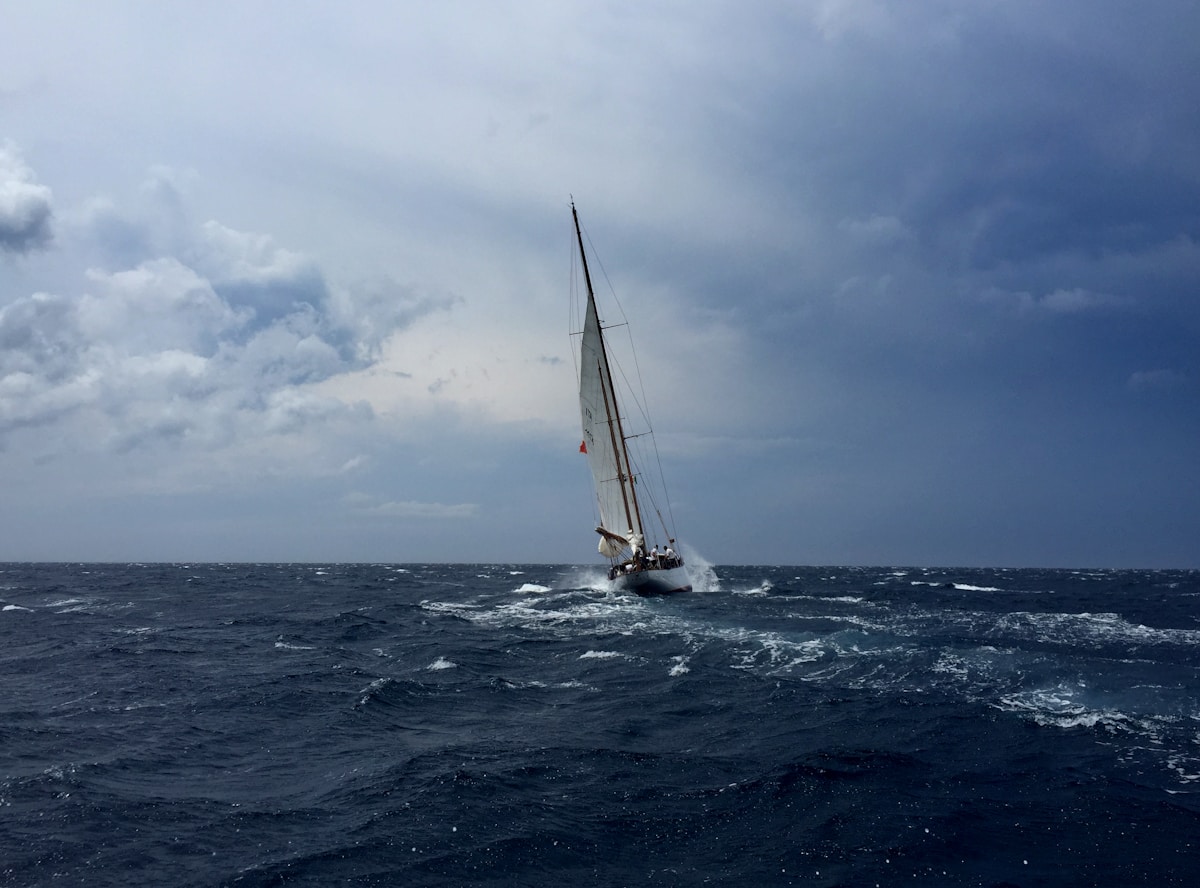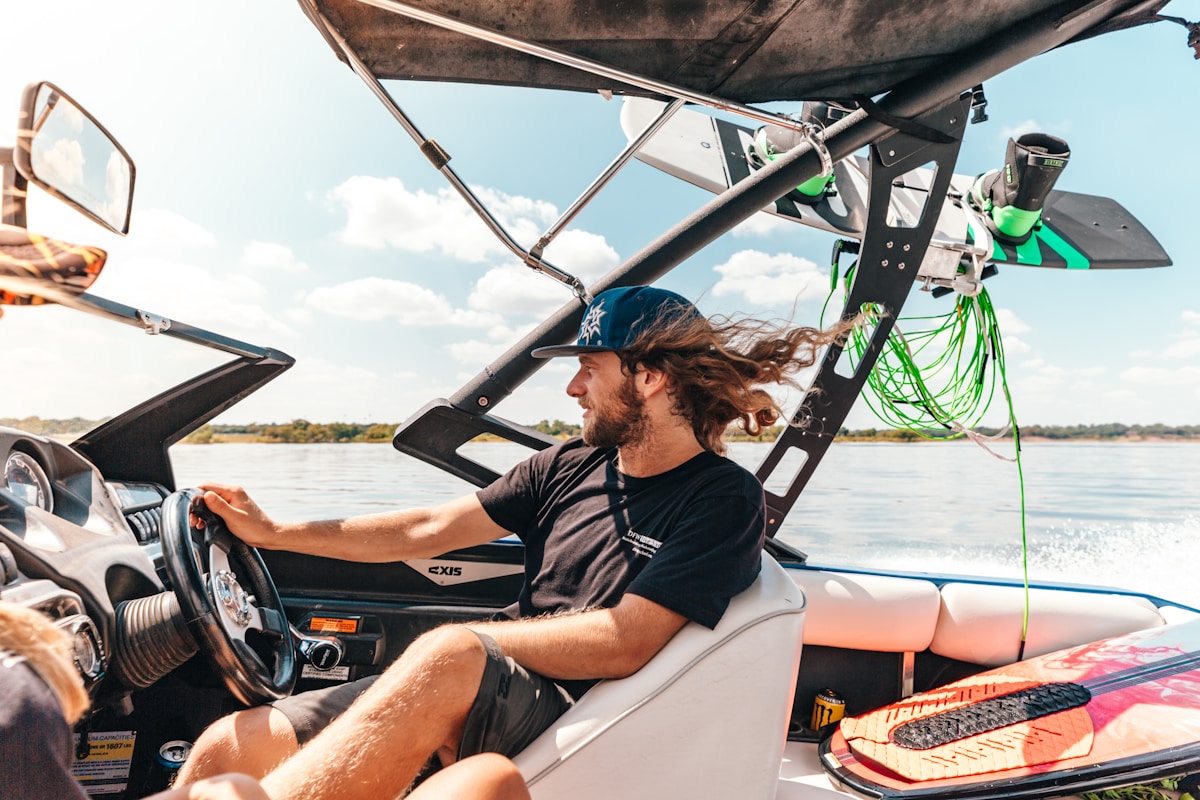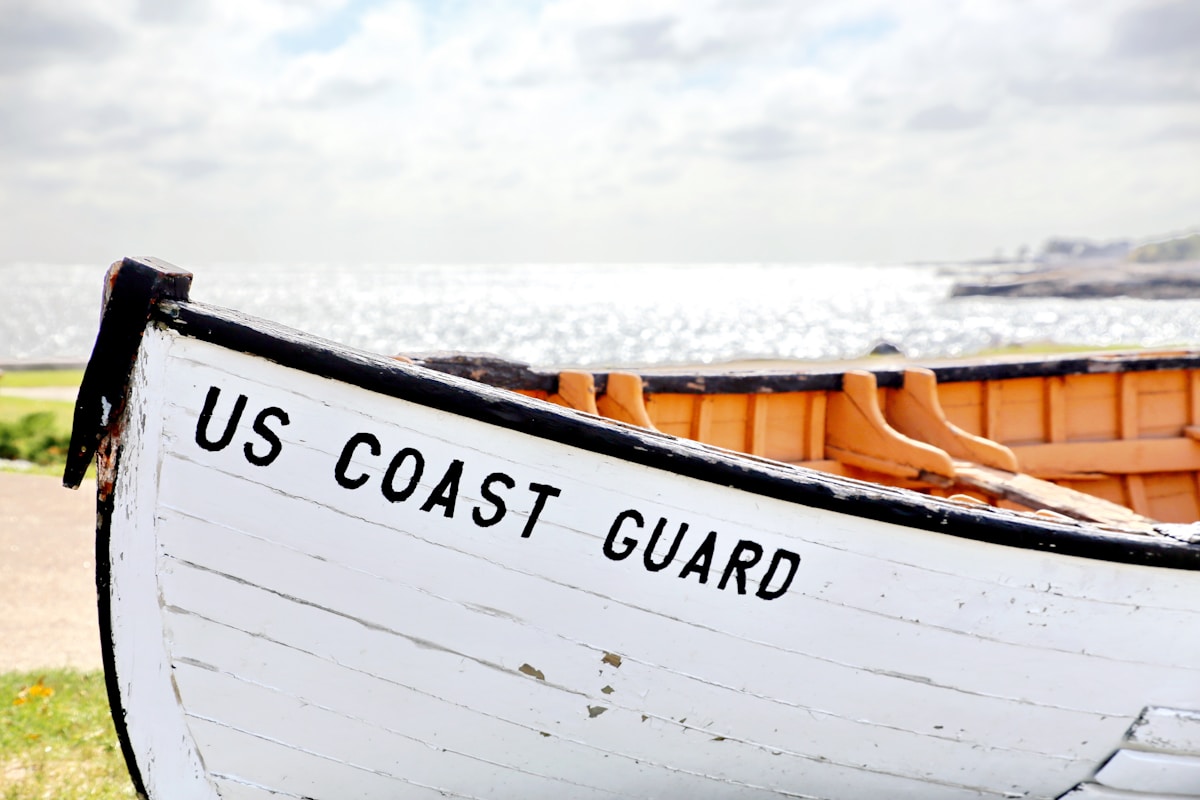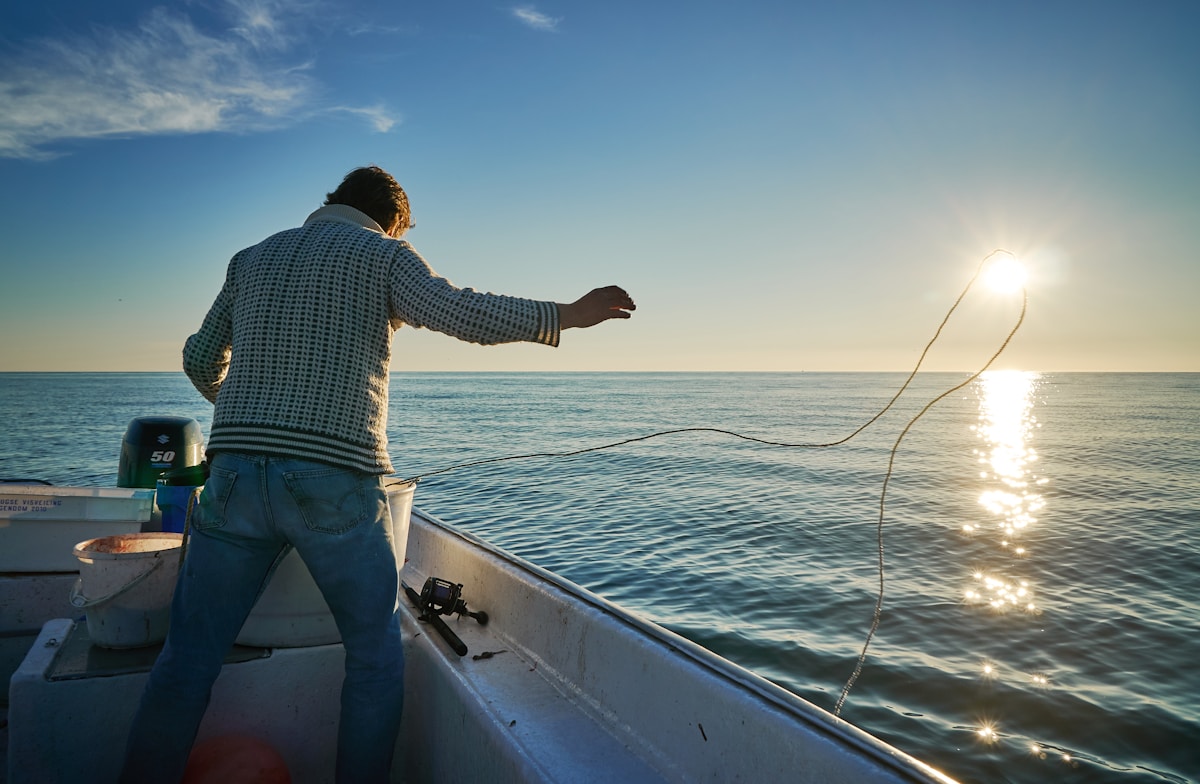There is nothing quite like being out on the open water - but as with any adventure, there comes a fair share of responsibility to consider to keep your friends and family safe. Welcome to our ultimate guide to boat safety. We'll delve deep into various aspects of safe boating, starting from what to do before letting other boat operators drive your pleasure craft, all the way to understanding safety equipment and emergency procedures. Buckle up, as we set sail on this enlightening voyage.
Navigating the Waters: Boating Etiquette and Rules
Just like on the roads, there are rules to follow when you're out on the water. Knowing and adhering to these rules is essential to ensure the safety of everyone on your boat and around you.
Overview of Boating Rules and Regulations
Boating rules and regulations vary by destination, but some common rules include speed limits, no-wake zones, and rules about alcohol consumption. Ensure that you're familiar with the regulations in your area before you set sail. Ignorance of the rules is not an excuse and can lead to hefty fines or even accidents.
Understanding Navigation Lights and Buoys
Navigation lights and buoys are like the traffic signs of waterways. They provide important information about your location, nearby hazards, and how to navigate through the water safely. Learn to identify what different lights and buoys mean. This knowledge is particularly vital when boating at night or in poor visibility conditions.
Rights-of-Way Rules
Rights-of-way rules, or boating rules of the road, help prevent collisions on the water. Generally, a boat must give way if it's approaching another vessel from the starboard side or from behind. However, some vessels, such as those not under command or restricted in their ability to maneuver, have right of way over all others. It's crucial to learn these rules and follow them at all times.
Alcohol & Boating
It is an offence under the Criminal Code of Canada to operate a boat if you're impaired by drugs or alcohol. You are considered ‘under the influence' if you have a Blood Alcohol Concentration (BAC) in excess or 0.08%. For guests on your pleasure craft, alcohol consumption varies by province so it is advised to ensure you know the local legislation prior to having alcohol on-board.

Ensuring Passenger Safety on Your Boat
Once you have mastered the art of operating your boat safely, it's time to turn your attention to your passengers. The safety of everyone onboard is paramount, and as the boat operator, it's your responsibility to ensure they're prepared for any situation.
Discussing Safety Procedures
Begin with a safety briefing. Inform your passengers about the general rules to follow while on board: maintaining balance, keeping their hands inside the boat, and the importance of not running or jumping on the boat. Discuss what to do in case of emergencies such as a sudden storm or a man overboard situation.
Demonstrating Life Jacket Use
One of the most important aspects of boating safety is the correct use of life jackets. Demonstrate and test your guests on how to properly wear a life jacket, ensuring it's snug yet comfortable. Remind everyone that life jackets should be worn at all times when the boat is in motion, regardless of their swimming abilities.
Outlining the Emergency Exit Plan
Prepare your passengers for potential emergencies by outlining an emergency exit plan. This should include where to gather in case of an emergency, how to use emergency exits, and where the emergency radio equipment is located.

Promoting Awareness of Safety Equipment
Safety equipment aboard a boat is useless if no one knows how to use it or where to find it. Ensure that all your passengers are familiar with the various safety tools available and their appropriate usage.
Location and Usage of Life Jackets
Ensure that there are enough life jackets for everyone on board, and that they can be reached with easy access. Once again, stress their importance and demonstrate how to use them.
Understanding the Use of Fire Extinguishers
Familiarize other riders with the location of the fire extinguishers and explain when and how to use them. Highlight the PASS (Pull, Aim, Squeeze, Sweep) method for using a fire extinguisher.
Demonstrating the Use of Flares and Signaling Devices
Visual distress signals, such as flares and smoke signals, are crucial during an emergency. Show your guests where these devices are stored and how to use them.
Highlighting the Location and Basic Use of the First Aid Kit
Finally, show them where the first aid kit is and go through its contents. While it's not necessary for everyone to have advanced medical training, understanding the basics of first aid can be a lifesaver in an emergency situation.

Weather and Sea Conditions: Your Boating Compass
The impact of weather and sea conditions on boating cannot be overstated. Adverse conditions can not only spoil your fun but also pose serious safety risks. The Government of Canada releases information online via Environment Canada's Marine Forecasts and Warnings.
Understanding Weather Forecasts and Their Impact on Boating
Before heading out, always check the weather forecast. Look for possible storms, changes in wind speed and direction, and temperature changes. Understand that weather can change rapidly, especially on larger bodies of water, and be prepared to respond appropriately.
How to Handle Various Sea Conditions
Different sea conditions require different handling techniques. In calm waters, you may be able to cruise along without concern. However, in rough or choppy conditions, you need to slow down, ensure everyone on board is secure, and consider turning back or heading for shelter. Practice handling your boat in various conditions, and always respect the power of the sea.

Deciding a Safe Speed for Your Boat
Determining the right speed while boating isn't just about pushing your vessel to its limits. A myriad of factors play a role in deciding a safe speed. It's a blend of respecting maritime law, prioritizing safety, and acknowledging the influence of environmental conditions.
Considering Weather Conditions
Weather is a significant factor when setting your boat's speed. Sunny days with calm winds might allow for a faster pace, while fog, rain, or high winds warrant slower speeds. Always check the weather forecast before setting sail and monitor conditions continuously throughout your trip. Be ready to adjust your speed in response to changing weather conditions to ensure boat safety. Check Environment Canada's Marine Forecasts and Warnings for updates.
Observing Water Conditions
Water conditions can also dictate your boat's safe speed. You must account for waves, currents, and even underwater obstacles. In rough seas or fast-moving currents, a slower speed is typically safer. Always maintain a speed that allows you to maintain control of your boat, even in unpredictable water conditions.
Evaluating Boat Traffic
The density of boat traffic in your vicinity is another key factor. High-traffic areas require lower speeds to allow ample time for reaction and avoid potential collisions. Always stay vigilant, watch for other vessels, and follow speed recommendations and regulations in the area you're boating.
General Canadian Marine Speed Guidelines
Please remember that specific restrictions and speed limits can vary by province, region and body of water, so it's essential to understand and comply with the rules that apply to the areas where you're boating. Never boat in an area where you are not aware of local legislation.
- Within 30 meters of shore: A speed limit of 10 km/h applies to all vessels operating within 30 meters of the shore in all waters within Canada. The rule aims to prevent shoreline erosion, ensure swimmer safety, and reduce conflicts with other water activities.
- Vessel Operation Restriction Regulations (VORRs): VORRs are set out by local authorities and may include restrictions on boat speed, boat engine size, and even prohibitions on certain types of vessels in specified areas. Boaters should check local regulations to ensure compliance.
- No Wake Zones: In certain areas, often near marinas, docks, and populated areas, boats must operate at a slow pace that doesn't produce a wake. While a specific speed isn't defined for these zones, operators should be slow enough not to create a wake that could cause damage or harm.
- Unreasonable Speed: Under the Canada Shipping Act, 2001, it's an offense to operate a vessel at a speed that is unreasonable or unsafe given the circumstances. This includes consideration of factors such as visibility, traffic density, the maneuverability of the vessel, weather conditions, the proximity of navigational hazards, and the speed limits set out in the Vessel Operation Restriction Regulations.
The online publication "Transport Canada Safe Boating Guide" recommends that boaters "go slow" when they're close to swimmers, the shore, docks, rafts, or other boats. Going slow also applies in crowded areas, low visibility, and narrow channels.

Safety Measures When Towing a Skier
Whether you're towing a skier, wakeboarder, or tuber behind your boat, ensuring safety is crucial. Here are some safety measures you should implement to ensure a fun, safe day on the water.
Assigning a Spotter
It is always recommended to have a designated spotter onboard when towing someone. The spotter's job is to keep an eye on the skier at all times, alert the boat operator to falls, and help communicate the skier's signals. This extra set of eyes allows the boat operator to focus on driving.
Checking the Equipment
Before heading out, take time to inspect the towing equipment. Check the towline for wear and tear, ensure the skier's harness fits properly, and that the safety release mechanism is functioning correctly. Also, ensure that the skier has a properly fitted life jacket.
Communicating with the Skier
Establish clear communication signals with the skier. These hand signals can relay when they're ready to start, if they want to go faster or slower, and when they're done skiing. Ensure both the spotter and the boat operator understand these signals.

Before You Let Someone Else Operate Your Boat
Handing over the controls of your boat isn't as simple as tossing someone the car keys. It requires a fair amount of consideration and preparation to ensure the safety of everyone on board. Here's what you need to do before you let someone else operate your boat.
Assessing Skills and Experience
Just as you wouldn't hand your vehicle keys to a family member without competency to drive, the same holds true for your boat. At the onset, it is important to ensure the person who is taking the helm has their boating license. From there, ensure that they have a solid understanding of how to drive a boat, the 'rules of the road' when it comes to navigation, and crucial emergency procedures. They should be comfortable steering the boat, adjusting speed, and maintaining a proper lookout. If they lack experience, it may be prudent to consider a boating safety course from an accredited course provider.
Briefing on Boat's Controls
Every boat is different. Even if the person has boating experience, it's important to acquaint them with your specific boat's controls. Go over the basics like steering, throttle, and gear shifts. Also, cover the use of the navigation and radio equipment, lighting controls, and bilge pumps. Highlight the location of the motor cutoff switch, and explain its importance. This step ensures they'll know how to respond effectively under varying circumstances.
Walkthrough of the Boat
Before setting sail, conduct a thorough walkthrough of the boat. Point out the location of the safety gear, such as life jackets, first aid kit, fire extinguishers, and your emergency signaling device. Make sure they know where the anchor is and how to deploy it. Brief them on the fuel system, including how to check fuel levels and ventilate the bilges. Finally, discuss the procedures for man overboard, fire, or other emergencies.

Knowledge is Power: Boater Safety Course and Certificates
In Canada, anyone who operates a motorized pleasure craft must carry proof of competency, typically in the form of the Pleasure Craft Operator Card (PCOC) via a Transport Canada boat safety test. This requirement applies to all types of motorized boats, regardless of the size of the boat or the size of the motor.
Boating SafPleasure Craft Operator Card (PCOC)
To get the PCOC, you need to pass an accredited boating safety course. The test covers a variety of topics including boating regulations, navigation and right-of-way rules, emergency procedures, and more. Many organizations offer both online and in-person training to prepare for the PCOC exam. For more information, visit Transport Canada boating safety PCOC guide online here: Learn More About the PCOC Card
You may find an online course and test available from sites like Boat-Ed. These online providers allow you to complete the Transport Canada approved online course. Once successfully completed, you will receive a temporary PCOC boating license which is handy if you're in a time crunch.
If your boating license PCOC card is lost or damaged, you may order a replacement card from various sources online. Boaterexam.com, who also offers an online boating license safety course, offers extra replacement cards for only $19.95.
Restricted Operator Certificate (Maritime)
For those who plan to use a marine VHF radio, a Restricted Operator Certificate (Maritime) or ROC(M) is required. This certificate ensures that individuals can operate a VHF radio correctly and understand the procedures for emergency situations.
Advanced Boating Safety Courses
After obtaining the PCOC, boaters may choose to continue their boating safety education with an advanced safety course from an accredited course provider. These include:
Navigation Test: This training and subsequent test will ensure that you're well versed in reading charts, understanding tides and currents, and using electronic navigation sysftems.
Boating 2 – Beyond the PCOC: This course expands your competency on basic knowledge required for the PCOC and covers topics like anchoring, docking, and knot tying.
Boating 3 – Introduction to Marine Navigation: This course introduces advanced navigation techniques and knowledge.
Specialized Boat Safety Certifications
For those interested in specific types of boating, there are specialized certifications that can be completed. For example, individuals interested in sailing can obtain certifications by passing boating course through Sail Canada. These certifications cover everything from basic crewing skills to advanced offshore sailing.

Emergency Procedures: Being Prepared for the Unexpected
Even with all the preparation in the world, emergencies can still happen. Knowing how to respond in these situations can mean the difference between a minor incident and a major catastrophe.
What to Do in Case of a Man Overboard
If someone falls overboard, immediate action is necessary. Remember the phrase "Stop, Turn, Throw, Go, Tow":
- Stop the boat as soon as you realize someone is overboard.
- Turn the boat towards the person in the water.
- Throw floatation devices or life-saving equipment to them.
- Go towards the person but approach them from the leeward side to avoid wind pushing the boat onto the person.
- Tow the person back to the boat and assist them in getting back onboard.
How to Handle a Fire Onboard
In case of a fire, aim to extinguish it if it's small and contained. Remember the PASS method – Pull the pin, Aim the nozzle, Squeeze the lever, and Sweep the nozzle back and forth at the base of the fire. If the fire is too large or spreading, prepare to abandon the boat and alert the coast guard.
Steps to Take if the Boat Capsizes
If your pleasure craft capsizes, stay with the boat if possible, as it will be easier for rescuers to locate. Try to take a headcount and make sure everyone is accounted for. Use your emergency equipment to signal for help.
Dealing with Medical Emergencies on the Water
For medical emergencies, having a well-stocked first aid kit and knowing basic first aid can be lifesaving. Address immediate threats and then contact the coast guard or local authorities to arrange for medical assistance.

Staying Shipshape: Maintenance and Regular Checks
A well-maintained boat is a safe boat. Regular inspections and servicing can help you catch potential problems before they become major issues.
Routine Inspections and Servicing
Just like your car, your boat needs regular check-ups to make sure that everything is in good working order. Regular servicing should involve checking the fuel systems for leaks, ensuring the electrical system is functioning correctly, inspecting the steering and throttle controls, and confirming the bilge pump is working effectively. Create a routine device inspection checklist and stick to it.
Engine Checks and Maintenance
The engine is the heart of your pleasure craft, and proper maintenance is essential. Regular motor checks should include monitoring oil levels, checking for fuel or oil leaks, and inspecting the belts and hoses for wear and tear. It's also important to clean and replace the air filters and change the motor oil regularly according to the manufacturer's recommendations. In the event that your motor is getting up there in age, you may consider a replacement to ensure that your pleasure craft is water ready.
Importance of Hull Inspections
Don't forget about the hull. Regularly complete a hull inspection, checking for signs of damage, such as cracks or blisters. Any damage to the hull can affect the boat's performance and safety. Cleaning the hull regularly also helps improve fuel efficiency and speed.

Sailing into the Sunset
Boating is an incredible way to explore and enjoy the world's waterways. Yet, it comes with responsibilities. From understanding the rules of the water and the importance of weather and sea conditions to regular maintenance and preparedness for emergencies, every aspect plays a vital role in ensuring safety on the water.
Remember that safety starts before you even leave the dock. Equip your pleasure craft with the necessary safety gear, ensure everyone on board knows how to use it, and run through safety procedures before you set sail. Regular maintenance and checks can help you spot potential problems early and keep your boat or personal watercraft in top condition.
Above all, boating should be an enjoyable experience. With careful preparation and a respect for the rules and conditions of the water, you can ensure it remains just that. So, gear up, stay safe, and savor every moment of your pleasure craft adventures.

*The information contained in this blog post is for general information and educational purposes only and is not intended to serve as legal or other professional advice. While we strive to provide accurate and up-to-date information, we make no warranties or representations of any kind, express or implied, about the completeness, accuracy, reliability, suitability, or availability concerning the information, products, services, or related graphics contained in this blog post for any purpose. Any reliance you place on such information is strictly at your own risk. Always consult Transport Canada boating safety guide for the most up to date information.
Laws and regulations related to boating safety vary by location and can change over time. The information provided in this post reflects understanding as of the last update and may not reflect current Transport Canada regulations. Always consult local authorities, the coast guard, or other appropriate organizations to confirm the most current boating safety rules and regulations applicable to your area.
In no event will we be liable for any loss or damage including, without limitation, indirect or consequential loss or damage, or any loss or damage whatsoever arising from the loss of data or profits arising out of, or in connection with, the use of this blog post. By following the guidelines in this blog post, you agree to this disclaimer and acknowledge that the use of the information contained herein is at your sole risk.
